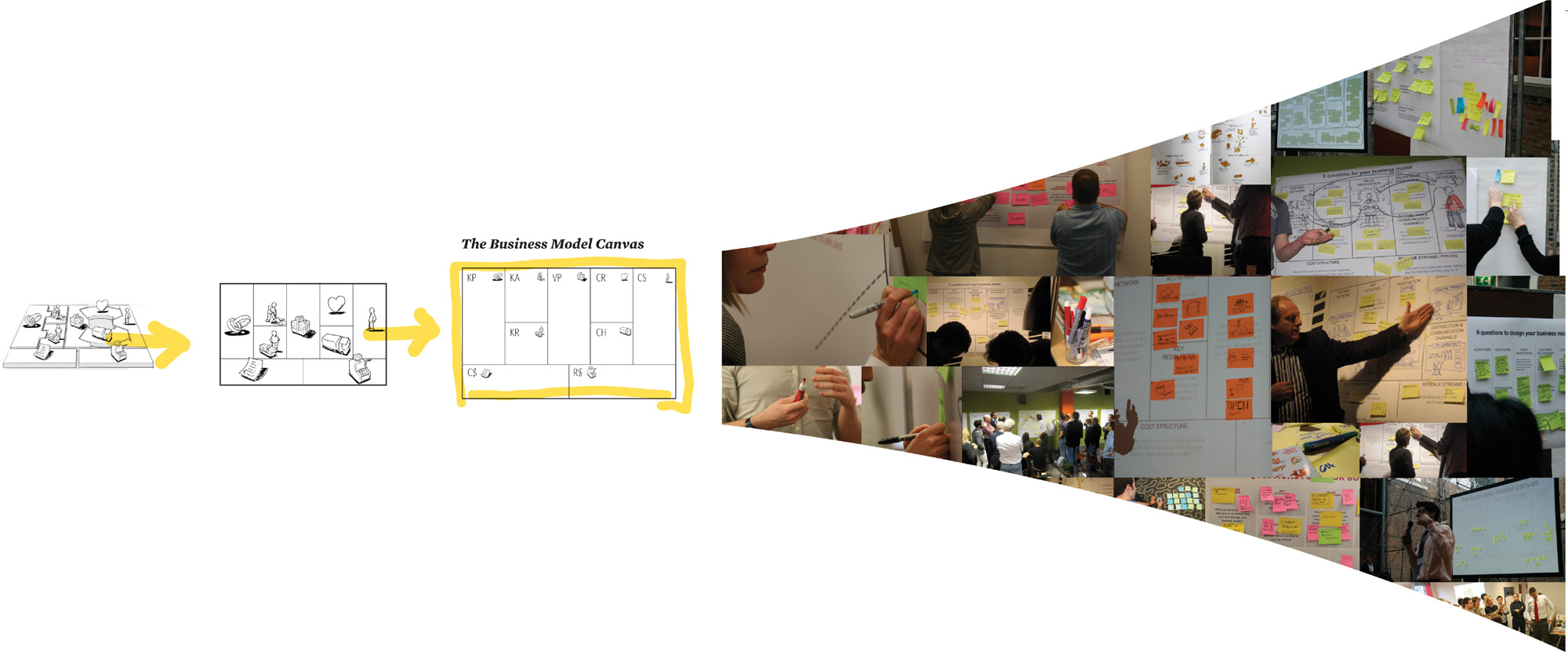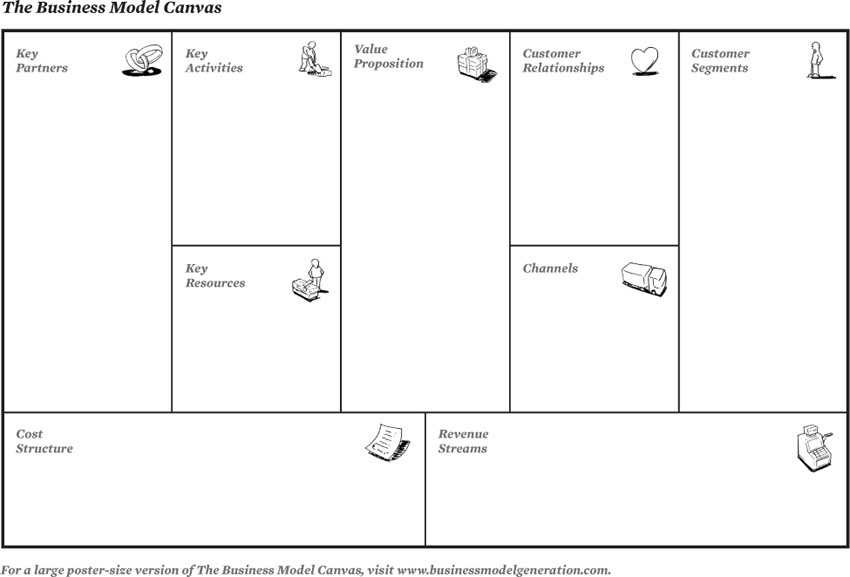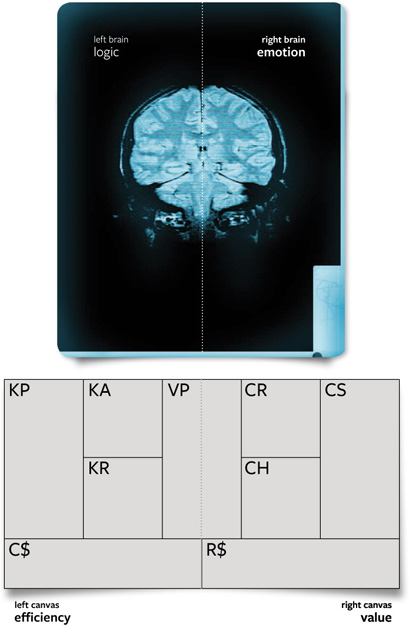
9 C$ Cost Structure

The Cost Structure describes all costs incurred to operate a business model
This building block describes the most important costs incurred while operating under a particular business model. Creating and delivering value, maintaining Customer Relationships, and generating revenue all incur costs. Such costs can be calculated relatively easily after defining Key Resources, Key Activities, and Key Partnerships. Some business models, though, are more cost-driven than others. So-called “no frills” airlines, for instance, have built business models entirely around low Cost Structures.
What are the most important costs inherent in our business model? Which Key Resources are most expensive? Which Key Activities are most expensive?
Naturally enough, costs should be minimized in every business model. But low Cost Structures are more important to some business models than to others. Therefore it can be useful to distinguish between two broad classes of business model Cost Structures: cost-driven and value-driven (many business models fall in between these two extremes):
Cost-driven
Cost-driven business models focus on minimizing costs wherever possible. This approach aims at creating and maintaining the leanest possible Cost Structure, using low price Value Propositions, maximum automation, and extensive outsourcing. No frills airlines, such as Southwest, easyJet, and Ryanair typify cost-driven business models.
Value-driven
Some companies are less concerned with the cost implications of a particular business model design, and instead focus on value creation. Premium Value Propositions and a high degree of personalized service usually characterize value-driven business models. Luxury hotels, with their lavish facilities and exclusive services, fall into this category.
Cost Structures can have the following characteristics:
Fixed costs
Costs that remain the same despite the volume of goods or services produced. Examples include salaries, rents, and physical manufacturing facilities. Some businesses, such as manufacturing companies, are characterized by a high proportion of fixed costs.
Variable costs
Costs that vary proportionally with the volume of goods or services produced. Some businesses, such as music festivals, are characterized by a high proportion of variable costs.
Economies of scale
Cost advantages that a business enjoys as its output expands. Larger companies, for instance, benefit from lower bulk purchase rates. This and other factors cause average cost per unit to fall as output rises.
Economies of scope
Cost advantages that a business enjoys due to a larger scope of operations. In a large enterprise, for example, the same marketing activities or Distribution Channels may support multiple products.
The nine business model Building Blocks form the basis for a handy tool, which we call the Business Model Canvas.
The Business Model Canvas
This tool resembles a painter’s canvas—preformatted with the nine blocks—which allows you to paint pictures of new or existing business models. The Business Model Canvas works best when printed out on a large surface so groups of people can jointly start sketching and discussing business model elements with Post-it® notes or board markers. It is a hands-on tool that fosters understanding, discussion, creativity, and analysis.

This tool resembles a painter’s canvas—preformatted with the nine blocks—which allows you to paint pictures of new or existing business models. The Business Model Canvas works best when printed out on a large surface so groups of people can

For a large poster-size version of The Business Model Canvas, visit www.businessmodelgeneration.com/canvas.


Example: Apple iPod/iTunes Business Model
In 2001 Apple launched its iconic iPod brand of portable media player. The device works in conjunction with iTunes software that enables users to transfer music and other content from the iPod to a computer. The software also provides a seamless connection to Apple’s online store so users can purchase and download content.
This potent combination of device, software, and online store quickly disrupted the music industry and gave Apple a dominant market position. Yet Apple was not the first company to bring a portable media player to market. Competitors such as Diamond Multimedia, with its Rio brand of portable media players, were successful until they were outpaced by Apple.
How did Apple achieve such dominance? Because it competed with a better business model. On the one hand, it offered users a seamless music experience by combining its distinctively designed iPod devices with iTunes software and the iTunes online store. Apple’s Value Proposition is to allow customers to easily search, buy, and enjoy digital music. On the other hand, to make this Value Proposition possible, Apple had to negotiate deals with all the major record companies to create the world’s largest online music library.
The twist? Apple earns most of its music-related revenues from selling iPods, while using integration with the online music store to protect itself from competitors.

HOW DO YOU USE THE CANVAS?
The public sector is often challenged to implement private sector principles. I have used the Canvas to help a department view itself as a service-oriented business, establishing externalized as-is and to-be business models. It has created a whole new conversation around describing and innovating the business.
Mike Lachapelle, Canada
I consult with small companies on using the freemium business model. This model involves giving core products away for free, which is very counterintuitive to most businesspeople. Thanks to the Business Model Canvas, I can easily illustrate how it makes financial sense.
Peter Froberg, Denmark
I help business owners plan their transition and exit from their companies. Success depends on sustaining long-term company viability and growth. Key to this is a business model innovation program. The Canvas helps us identify and innovate their business models.
Nicholas K. Niemann, United States
I’m using the Business Model Canvas in Brazil to help artists, cultural producers, and game designers to envision innovative business models for the Cultural and Creative Industries. I apply it in the Cultural Production MBA at FGV and in the Innovation Games Lab at COPPE/UFRJ Business Incubator.
Claudio D’Ipolitto, Brazil
When you typically think of a business model, the conclusion is that it is a ‘for profit’ business. However, I found that the Canvas is also very effective in the non-profit sector. We used it to DESIGN + ALIGN members of the leadership team during the formation of a new non-profit program. The Canvas was flexible enough to take into account the goals of this social entrepreneurial venture, and bring clarity to the true Value Proposition of the business and how to make it sustainable.
Kevin Donaldson, United States
I wish I had known the Canvas years ago! With a particular tough and complicated print-to-digital project within the publishing industry it would have been so helpful to show all project members in this visual way both the big picture, their (important) own roles in it and the inter-dependencies. Hours of explaining, arguing, and misunderstanding could have been saved.
Jille Sol, Netherlands
A close friend was looking for a new job. I used the Business Model Canvas in order to assess her personal business model. Her core competences and Value Proposition were outstanding but she failed to leverage her strategic partners and develop appropriate Customer Relationships. This adjusted focus opened new opportunities.
Daniel Pandza, Mexico
Imagine 60 first-year students, knowing nothing about entrepreneurship. In less than five days, thanks to the Business Model Canvas, they were able to pitch a viable idea with conviction and clarity. They used it as a tool to cover all the startup-building dimensions.
Guilhem Bertholet, France
I use the Business Model Canvas to teach early stage entrepreneurs across a wide range of industries as a much better way to TRANSLATE THEIR BUSINESS PLANS INTO THE BUSINESS PROCESSES that they (will) need to operate their businesses and to ensure that they are focused properly on being customer-centric in a way that makes the business as highly profitable as it can be.
Bob Dunn, United States
I have used the Canvas with a co-founder to design a business plan for a national level contest held by The Economic Times, India. The Canvas enabled me to think through all the aspects of the startup and put together a plan that VCs might find well thought out and attractive to fund.
Praveen Singh, India
We were asked to redesign the language service of an international NGO. The Business Model Canvas was especially helpful to show the links between the needs of people’s day-to-day work and a service that was felt too specialized, considered only as an afterthought, and far away from their priorities.
Paola Valeri, Spain
As a startup coach I support teams to create new products and design their businesses. The Business Model Canvas does a great job assisting me to remind the teams to think holistically about their business and prevents them from getting stuck on details. This helps to make their new venture a success.
Christian Schüller, Germany
The Business Model Canvas has allowed me to establish a common language and framework with colleagues. I’ve used the Canvas to explore new growth opportunities, assess uses of new business models by competitors, and to communicate across the organization how we could accelerate technology, market, and business model innovations.
Bruce MacVarish, United States
The Business Model Canvas has helped several health care organizations in the Netherlands to make the move from a budget driven governmental institution to an entrepreneurial value-adding organization.
Huub Raemakers, Netherlands
I used the Canvas with senior managers of a public company to help them restructure their value chain due to changes in sector regulation. The key success factor was to understand which new Value Propositions could be offered to their clients and then translated into internal operations.
Leandro Jesus, Brazil
WE USED 15,000 POST-ITS AND MORE THAN 100 METERS OF BROWN PAPER to design a future organizational structure in a global manufacturing company. The key of all activities was, however, the Business Model Canvas. It convinced us by its practical applicability, simplicity, and logical cause-and-effect relationships.
Daniel Egger, Brazil
I used the Canvas to do a REALITY CHECK for my new startup Mupps, a platform where artists can make their own music apps for iPhone and Android phones in minutes. You know what? The Canvas made me even surer of the possible success! So I gotta go, work to do!
Erwin Blom, Netherlands
The Business Model Canvas has proven to be a very useful tool for capturing ideas and solutions for e-commerce projects. Most of my clients are SMEs and the Canvas helps them to clarify their current business models and understand and focus on the impact of e-commerce on their organizations.
Marc Castricum, Netherlands
I applied the Canvas to help a company align key staff in order to determine shared goals and strategic priorities, which were used during the planning process and incorporated with the BSC. It also ensured that the chosen initiatives were clearly driven by the new strategic priorities.
Martin Fanghanel, Bolivia